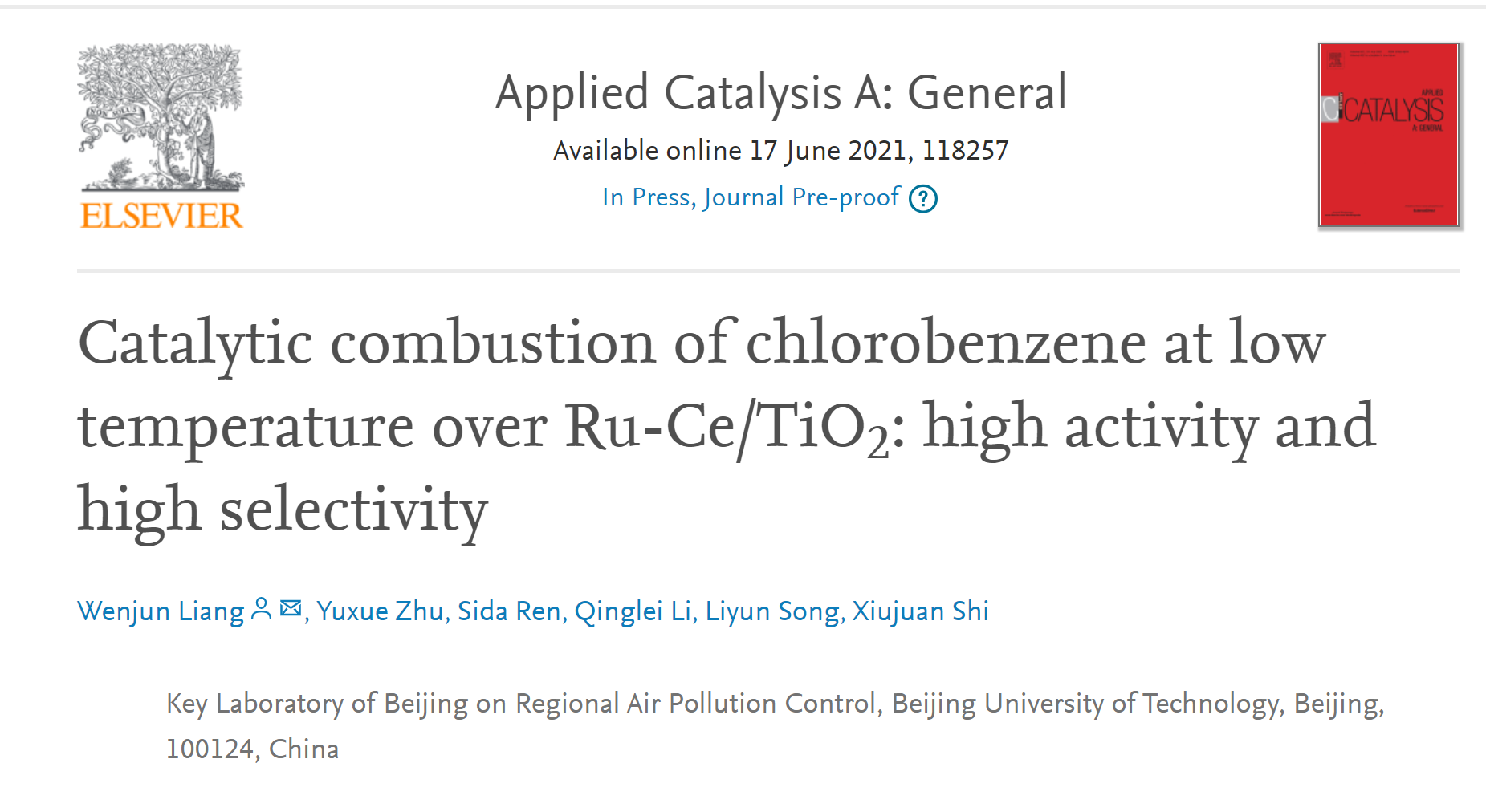博文
【北工大梁文俊】Ru-Ce/TiO2催化剂上氯苯催化燃烧,Ce引入提高性能、降低贵金属、抑制多氯产物
||
https://www.sciencedirect.com/science/article/pii/S0926860X21002714

Highlights
•The role of CeO2 in catalytic oxidation and the interaction of Ru/Ce bimetals were investigated
•CeO2 improved the catalytic activity greatly at low temperature and maintained the high catalytic efficiency while reducing the content of noble metal
•Ru-O-Ce effectively promoted the transfer of surface oxygen to the active site and accelerated the catalytic reaction rate
•The high inorganic chlorine selectivity over 0.4Ru-1.0Ce/TiO2 was attributed to the high efficient removal of Cl, which demonstrated in the Deacon process(HCl + O2⇌ Cl2+H2O).
Abstract
Ru/TiO2 and Ru-Ce/TiO2 catalysts were prepared by the equal-volume impregnation method to test their catalytic oxidation of chlorobenzene(CB), with the aim to investigate the effect of Ce addition on the redox capacity of the catalysts under the premise of reducing the content of noble metals. It was found that the introduction of Ce conserved the high catalytic efficiency of the catalyst while reducing the content of noble metal, and the catalysis of CB was greatly improved at low temperatures. Compared with the 0.4Ru/TiO2 catalyst, the T10 and T90 of the 0.4Ru-1.0Ce/TiO2 catalyst decreased by 50 ℃ and 60 ℃ respectively. It presented high reaction rate at 170 ℃ with an increase from 1.21 × 10-8 mol/min‧m2 for the 0.4Ru/TiO2 catalyst to 10.45 × 10-8 mol/min‧m2, making it even better than the 2.0Ru/TiO2 catalyst. The structure and morphology of the Ru/TiO2 catalyst did not change with the Ce doping and the mesoporous structure of the catalysts was maintained. CeO2 can not only store and release oxygen, but also improve the activity and dispersion of precious metal loaded. The formation of Ru-O-Ce under the interaction between CeO2 and Ru species promoted electron transfer and improved the mobility of surface oxygen, thus forming RuOx with higher valance. The introduction of Ce improved the yield of COx and selectivity towards inorganic chlorine (HCl and Cl2) and prevented the catalyst from producing more chlorinated by-products, thus greatly reducing the chance of producing more toxic dioxins.


https://wap.sciencenet.cn/blog-3913-1292340.html
上一篇:【北工大戴洪兴@邓积光】三氯乙烯在Ru/SnO2上的催化氧化,高活性稳定性耐水性、中间物种/副产物确定
下一篇:新一代零级空气催化剂“上线”,非甲烷总烃催化剂第二代研发成功